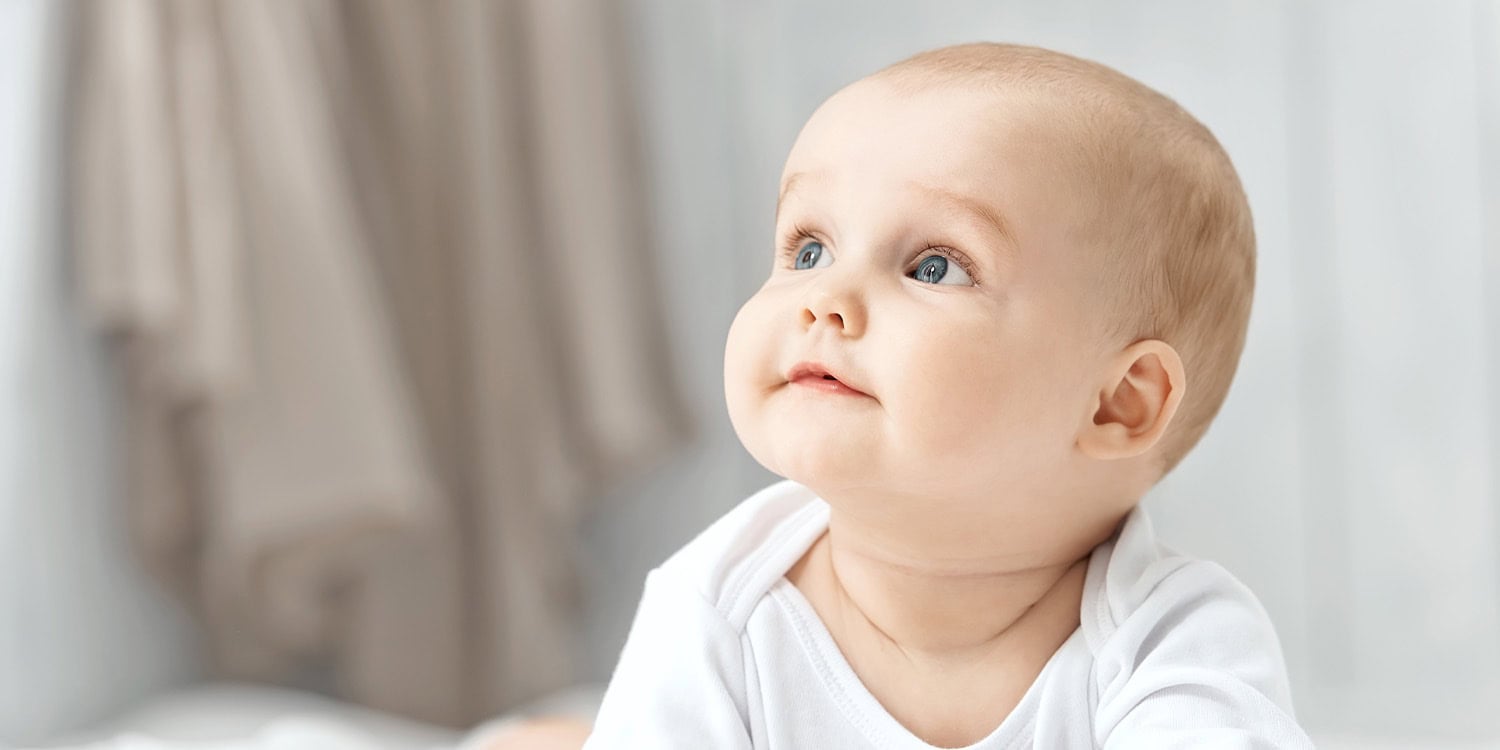A new study published in Hormones and Behavior has shed light on how women respond to baby faces. The research suggests that infants with more pronounced “baby schema” features—such as chubby cheeks—are perceived as cuter and tend to elicit stronger caretaking instincts. However, the researchers found that the way women react to these features depends on individual differences in both their nurturing tendencies and the way their genes regulate the body’s oxytocin system.
Baby schema refers to a specific set of physical features that human infants typically display, such as a large forehead, small chin, and wide eyes. These features are believed to have evolved to trigger affectionate and protective responses in adults, ensuring that infants receive the care they need to survive and thrive.
Prior studies have shown that people tend to find baby schema features appealing, and that these features can increase motivation to care for an infant. However, scientists are still trying to understand the precise factors that influence this sensitivity to baby schema. Some people seem to be more responsive than others, and the researchers of this study wanted to know whether this variation could be explained by two factors: nurturance motivation (a person’s inherent drive to care for others) and the functioning of the oxytocin system, which plays a key role in social bonding and caregiving.
“This research project is part of a broader effort to understand variations in caregiving behavior and the factors that influence them. Specifically, we are interested in what makes people more or less caring. For this project, we examined both child-related factors and personal characteristics to examine what makes people more or less sensitive to baby schema features,” said study author Hannah Spencer, a PhD student at the Institute of Education and Child Studies at Leiden University.
“We hope to understand if and how sensitivity to infant signals may change as people become parents, in both mothers and fathers. Furthermore, we hope to understand how this sensitivity may predict caregiving behavior.”
The study involved 81 women between the ages of 22 and 24, all of whom had never given birth. This sample was chosen because the research was part of a broader project aimed at understanding caregiving behaviors in women who had not yet experienced motherhood. The participants underwent a series of tests in a lab setting that measured their reactions to baby faces with varying levels of baby schema features.
The baby faces used in the study were digitally altered to enhance or reduce baby schema features. Participants were shown these faces one at a time and were asked to rate the cuteness of each face on a scale from one to nine. They were also asked how motivated they felt to care for the infants in the photos. In addition to these self-reported measures, the researchers used two advanced techniques to capture participants’ automatic, unconscious responses to the baby faces.
First, they measured participants’ facial expressions using a technique called electromyography (EMG). Electrodes placed on the face recorded subtle muscle movements associated with smiling and frowning. Second, the researchers used electroencephalography (EEG) to track brain activity. This method allowed them to record the participants’ neural responses to the baby faces, focusing on specific brainwaves that are known to be associated with attention and emotional processing.
To explore the role of oxytocin, the researchers analyzed saliva samples from the participants to measure the methylation levels of genes related to the oxytocin system. Methylation is a chemical process that can alter gene activity without changing the underlying genetic code. Higher methylation of these genes typically reduces oxytocin sensitivity, while lower methylation can enhance it. By comparing these genetic markers to participants’ reactions to baby schema, the researchers could examine how individual differences in oxytocin sensitivity affected caregiving responses.
The results of the study confirmed that baby schema features do indeed influence how women respond to baby faces. Infants with more pronounced baby schema features were rated as cuter and more likely to inspire a desire to care for them. Participants also smiled more and displayed stronger neural responses when viewing these “cuter” babies.
However, the study found that not all women responded to baby schema in the same way. Women who scored higher on measures of nurturance motivation—their general tendency to provide care—showed greater neural activity in response to baby faces with pronounced features. Specifically, they exhibited higher amplitudes in the P2 and late positive potential (LPP) brainwave components, both of which are associated with attention to emotionally significant stimuli. These women also rated all infants as cuter, regardless of their level of baby schema.
In contrast, participants who had low levels of methylation in the oxytocin receptor gene (meaning they were more sensitive to oxytocin) showed stronger smiling responses to infants with pronounced baby schema features. Interestingly, these women did not differ in how they rated the cuteness of the babies or their motivation to care for them, but their facial muscles reacted more automatically to the presence of baby schema features.
“It was interesting that individual factors did not predict differences in how people rated the cuteness of infants varying in baby schema features or their motivation to care for them,” Spencer told PsyPost. “However, there were differences in the neurophysiological processing of these subtle signals. This suggests that individual factors might specifically affect the automatic processing of these signals.”
These findings suggest that sensitivity to baby schema operates at both a conscious and unconscious level. While women with high nurturance motivation may consciously find babies cuter and feel more motivated to care for them, those with higher oxytocin sensitivity seem to process these cues automatically through subtle facial expressions like smiling.
“Our study found that people who tend to be more nurturing and those with certain genetic markers related to oxytocin sensitivity are more sensitive to subtle differences in baby schema features,” Spencer said. “This indicates that both a person’s tendency to nurture and their sensitivity to oxytocin may make them more attuned to the subtle signals of infants.”
As with any research, this study had limitations that should be addressed in future work. One key limitation is that the study focused solely on women who had not yet experienced motherhood. As a result, it is unclear whether these findings would apply to parents, or how caregiving experiences, such as pregnancy and raising a child, might alter sensitivity to baby schema features.
Another limitation is that the study was conducted in a lab setting, which may not fully capture the complexity of caregiving behaviors in the real world. While the researchers measured automatic facial expressions and neural activity, it is difficult to say how these responses would translate to actual caregiving behavior outside the lab.
“We need to be cautious when linking sensitivity to baby schema features with actual caregiving behaviors, as there’s still very limited evidence to support this connection,” Spencer noted. “More research is needed to establish a clear link between automatic processing of infant features and real-world caregiving responses. Additionally, our study cannot determine possible gender differences in sensitivity to baby schema features. Also, research indicates that pregnancy and parenting may impact sensitivity to infant cues, and therefore it is unclear if our results may be similar in parents.”
“It’s important to note that we used specific genetic markers to measure oxytocin sensitivity, focusing on average methylation patterns of oxytocin system genes. This area of research is still developing. Our findings align with previous studies showing that the oxytocin system plays a role in sensitivity to social signals, but more research is needed.”
The study, “Facing infant cuteness: How nurturing care motivation and oxytocin system gene methylation are associated with responses to baby schema features,” was authored by Hannah Spencer, Franca H. Parianen Lesemann, Renate S.M. Buisman, Eline J. Kraaijenvanger, Susan Branje, Marco P.M. Boks, and Peter A. Bos.




